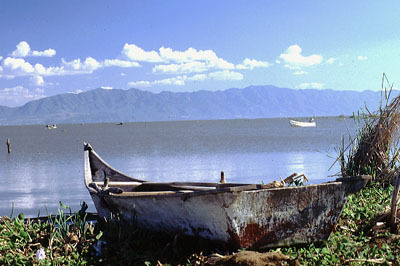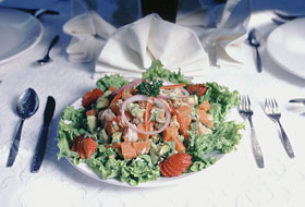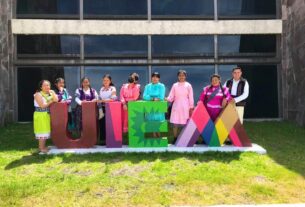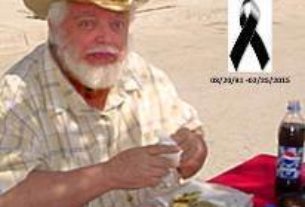Chapala: A Formal History
…Ah! Chapala
you have the magic of a story book
stories of sunsets and earthenware,
of romantic moonlit nights
Peaceful Chapala,
your lake – a romantic bride
like none other..

Chapala, embedded in the central part of Jalisco, is “a place of flower vases of fragrant clay and small earthenware pots”, known also as “The Wet or Soaked Place” or “A Place for Ducking into the Water” – this is the town after which Mexico’s most important lake was named.
In the beginning, Chapala, or “Chapalean” was a pre-Hispanic settlement dating back to sometime in the XII century A.D., when a migrating tribe of náhuatl indians, originating from the northwestern section of the country, settled here and found the northern shore of the lake already quite populated, as was described by Friar Antonio Tello, a Franciscan historian. Four centuries later, in the year 1524, once they amalgamated with the Coca and Cazcano indians who inhabited the shore from Poncitlán to Jocotepec, including Ajijic and Cosalá, together with Friar Juan de Padilla and a soldier, Alonso de Avalos, the domain of Chapalean was recognized as part of the New World.
The benefits of the evangelization by the Franciscan Fathers Friar Miguel de Bolonia, friar Martín de Jesús, or the Coruña, and Friar Juan de Amolón, were the construction of Axixic (Ajijic) convent, in 1531, and the Tlayacapan Church of San Antonio, the Chapala convent having been built in 1584. Of the three aforementioned, only the tower or steeple of the original San Antonio Tlayacapan church still remains. The parish churches of Chapala and Ajijic were started in the XVIII century with the secularization of religious buildings for the Franciscan Missionaries. From the XVI to the XVIII centuries Chapala was only partially commissioned by the Spanish Crown, being inhabited mainly by indians, in spite of the fact that the process of European colonization had started back in the XVI century.
In addition to the first European colonization in the XVI century, the period 1895 to the decade of the ’30s of the twentieth century, Chapala gave shelter among its population to a good number of foreigners of diverse nationalities, as well as to those of our fellow countrymen who began promoting tourism along the lakeside. Thus, the appearance of this “small fisherman’s village,” as described by Father Jesús T. Orozco, the town’s parish priest at the beginning of the century, was transformed by the first summer residences of neoclassic Mediterranean style, such as the “Casa Braniff” (now the Cazadores Restaurant), the building located at the corner of Degollado and Zaragoza streets (“Calvary” and “Fishing” streets until 1913), the building of the old Hotel Palmera and Hotel Niza, presently known as the Hotel Nido, and also the residences which can be seen along the boardwalk that leads to Francisco Madero Avenue (Beer Garden) where the Arzapalo Hotel, inaugurated in 1898, was located, as well as the Telegraph and Post Office building, to name but a few.
The Town Hall (Palacio Municipal) and the old Railroad Station were built between 1913 and 1930. This railroad was the first and only service there was connecting Chapala with Guadalajara and on to the north of the country, and by way of Mexico City, to the rest of the world. This building represents the beginning of the “Grand Epoque” of the Chapala lakeside when Guadalajara high society spent their weekends here and came especially during Holy Week and the Christmas Holiday.
With the introduction of the railroad, better alternatives were offered for the economic growth of the region, besides providing “a pleasure trip instead of a sacrifice”, as the railroad was more comfortable than the stage coaches which took up to 12 hours to make the trip, or the “Wichita” buses with big solid rubber tires, which also took a minimum of 5 hours to cover the same distance that the railroad did in 3 hours from Guadalajara to the “charming resort of Chapala.”
At present, access to any point in the country is easy and fast, by land or by air. Chapala and the lakeside are only 20 minutes away from the Guadalajara International Airport. Also, the Guadalajara-Chapala highway connects with those that lead to Mexico City and the northern part of the country, as well as with the highway to Puerto Vallarta and the southern part of Jalisco and also with the highway to Michoacan, and to the south along the Pacific coast.
As for the tourist accommodations, its hotel infrastructure offers alternatives ranging from 2 to 5 star hotels, as well as a good number of bars and restaurants where you can enjoy delicious Mexican and international cuisine; also cafeterias, banking facilities and currency exchange houses.

Recreation possibilities are many – water skiing, triathlon contests, sailing and regattas organized by the local Yacht Club. There are two islands in the lake, the largest is the Isle of Scorpions directly in front of the town of Chapala, where, besides the beautiful natural scenery, one can enjoy delicious Mexican cuisine. The other is the Island of Mezcala, facing the town of the same name, eastwards from Chapala, and where the ruins can still be seen of a fort taken over by the movement of the Mexican Independence, between 1812 and 1816, and which constitutes one of the four Spanish forts which to this day still exist; the San Juan de Ulúa Fort in Veracruz, the San Diego Fort in Acapulco and Chapultepec Castle in Mexico City.
Among the local important festivities is the Carnival, most often in February, which is very popular and begins with the traditional “burial of Bad Humor”, the the beautiful floats, costumed and masked groups, followed by “serenades” to the Carnival Queen and the crowning of “The Ugly King” in the Main Plaza. An established custom – after participating in the masked groups and attending the bull fights, the people go around cracking egg shells filled with aniline, and offering carnations to all the girls.
Another eye-catching aspect are the beautiful fireworks which become a real competition to see who creates the “best castle” (fireworks scaffold) or the “best little bull”. Sports events, Mexican rodeo stunts, donkey races, the waiters’ races, the masked group contest, the floats and the masquerade balls, all make this an outstanding and colorful festivity.
The Patron Saint of Chapala is Saint Francis of Assisi, and between the end of September and the first days of October, festivities in his honor begin with a novena, ending October 4th. The entire community takes part in the solemn processions organized by the different sections of the town, all terminating at the church atrium. Here too, beautiful fireworks as well as popular evening festivities take place in the Main Plaza.
As from 1995, the month of November has been designated as the period for the Fiestas Commemorating the Beginnings and Historical aspects of Chapala, featuring outstanding cultural events for the whole family and for all choices, making this the town’s most important celebration.
In addition to all the above mentioned attractions, our lakeside community invites you to come and enjoy wonderful natural scenery and the interesting and contrasting architecture.
Chapala, always near to you!
Historian and Chronicler: Bernardo Sandy Ramirez
Note: The history of Chapala and Ajijic are explored in more detail in two books by Tony Burton: “Foreign Footprints in Ajijic: decades of change in a Mexican village” and “If Walls Could Talk: Chapala’s historic buildings and their former occupants” (also available in Spanish as “Si las paredes hablaran: Edificios históricos de Chapala y sus antiguos ocupantes.”)




Nice article